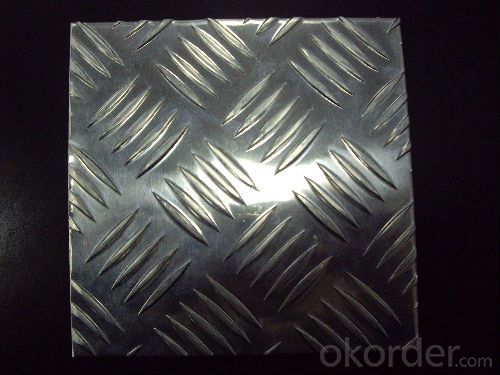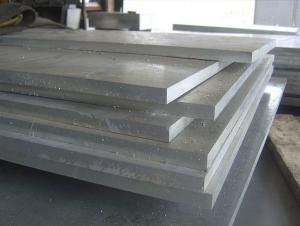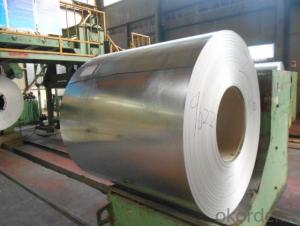Stainless Steel Sheet With Price In Different Grades
- Loading Port:
- Tianjin
- Payment Terms:
- TT or LC
- Min Order Qty:
- 6 m.t.
- Supply Capability:
- 5000 m.t./month
OKorder Service Pledge
OKorder Financial Service
You Might Also Like
1.Structure of Product Description
There are many different grades, such as: 200 series, 300 series, 400 series, 900series, etc. The detailed grade are as follows: 201, 202, 301, 304, 316, 410, 420, 430, etc.
The surface is including 2B, BA, Mirror Finish, Checkered, etc.
2. Main features of the product
a. Competitive price
b. Frist-Class Service.
c. Shortest service.
3. Image.

4. Product detailed sizes:
1000mm*2000mm, 1219mm*2438mm,1220mm*2440mm, 1500mm*3000mm, etc.
5. FAQ:
What is the quality standard?
---Usually our standard is GB3880-2006 or else.
What is the width range?
---It is from 1000mm to 2500mm, etc.
What is the length range?
---It is from 2000mm to 6000mm, etc.
What is the MOQ for your products yet?
Where is your client from?
---Normally it is from Japan, USA, ENGLISH, SINGAPORE, ETC.
What is your mainly products?
---Normally they are stainless steel sheet, stainless steel coil, stainless steel checkered sheet, stainless steel mirror finished sheet, color coated stainless steel sheet, etc.
- Q:Are stainless steel sheets suitable for heat exchangers?
- Yes, stainless steel sheets are suitable for heat exchangers. Stainless steel has excellent thermal conductivity, which means it can efficiently transfer heat between fluids. Additionally, stainless steel is highly resistant to corrosion and oxidation, making it ideal for applications where it will come into contact with various fluids or gases at different temperatures. Its durability and ability to withstand high temperatures also make it a reliable choice for heat exchangers. Overall, stainless steel sheets are a popular and reliable material for heat exchangers due to their thermal conductivity, corrosion resistance, and durability.
- Q:Are stainless steel sheets suitable for railway applications?
- Yes, stainless steel sheets are suitable for railway applications. Stainless steel has excellent corrosion resistance properties, making it ideal for use in environments where there is constant exposure to moisture, chemicals, and other harsh conditions, such as railway tracks. Additionally, stainless steel sheets have high strength and durability, which is crucial for withstanding heavy loads and vibrations associated with railway operations. The material also offers good heat resistance, allowing it to maintain its structural integrity even in high-temperature environments like railway brakes. Furthermore, stainless steel sheets can be easily formed and fabricated into various shapes and sizes, making them versatile for different railway components such as cladding, paneling, and structural elements. Overall, stainless steel sheets provide a reliable and long-lasting solution for railway applications, ensuring the safety and performance of the railway infrastructure.
- Q:Can stainless steel sheets be used for roofing or cladding?
- Yes, stainless steel sheets can be used for roofing or cladding as they offer durability, corrosion resistance, and a sleek aesthetic.
- Q:Are stainless steel sheets resistant to scaling at high temperatures?
- Stainless steel sheets, in general, possess resistance against scaling when exposed to high temperatures. This resistance is attributed to the elevated chromium content within stainless steel, which generates a protective oxide layer on the surface upon oxygen exposure. This oxide layer acts as a barrier, effectively hindering further oxidation and scaling of the material. Nevertheless, the extent of scaling resistance may fluctuate based on the particular grade and composition of stainless steel, as well as the temperature and duration of exposure. In exceedingly high-temperature surroundings, stainless steel might still encounter some degree of scaling; however, it typically exhibits greater resistance in comparison to alternative materials.
- Q:How do you measure the thickness of stainless steel sheets?
- There are multiple methods available for measuring the thickness of stainless steel sheets. One commonly used approach involves the utilization of a caliper, which is a precision measuring tool. By placing the jaws of the caliper on both sides of the sheet and tightening them until contact is made, the thickness can be directly measured. The reading on the caliper will provide an indication of the sheet's thickness. Alternatively, a more accurate method for measuring very thin sheets is through the use of a micrometer, which functions similarly to a caliper. By employing a spindle and anvil, the micrometer can provide precise measurements of thickness. This method is frequently employed in industries where accuracy is of utmost importance, such as manufacturing and engineering. In the absence of a caliper or micrometer, a simple ruler or tape measure can be utilized. Although this method may not provide the same level of accuracy as specialized tools, it can still offer a rough estimate of the thickness. By measuring the height of the sheet, assuming it is uniformly thick, one can infer the sheet's thickness. It is worth noting that the appropriate measurement tool depends on the thickness of the stainless steel sheet. Micrometers and calipers are best suited for measuring thinner sheets, while thicker sheets may require more specialized instruments like ultrasonic thickness gauges. In conclusion, the thickness of stainless steel sheets can be measured using various methods, including calipers, micrometers, rulers, or tape measures. The choice of tool depends on the desired level of accuracy and the thickness of the sheet being measured.
- Q:How do you attach stainless steel sheets to a wall?
- To attach stainless steel sheets to a wall, you can use a combination of adhesive and mechanical fasteners. First, ensure that the wall is clean and free from any debris or grease. Apply a strong construction adhesive to the back of the stainless steel sheet, spreading it evenly across the surface. Then, press the sheet firmly against the wall and hold it in place for a few minutes to allow the adhesive to bond. Additionally, use mechanical fasteners such as screws or nails to secure the stainless steel sheet to the wall, placing them along the edges and in the center of the sheet for added support and stability.
- Q:What are the benefits of using perforated stainless steel sheets?
- Using perforated stainless steel sheets in various applications offers several advantages. Firstly, these sheets provide excellent strength and durability due to the high tensile strength and corrosion resistance of stainless steel. This makes them a reliable option for applications that require materials with long-lasting properties. Additionally, the structural integrity of the sheets remains uncompromised even with the presence of perforations, ensuring their ability to withstand heavy loads and harsh environments. Secondly, these sheets offer exceptional ventilation and airflow. The perforations allow air and gases to pass through, making them suitable for applications that necessitate proper ventilation, such as HVAC systems, industrial machinery, and automotive components. This ventilation capability prevents the accumulation of heat and moisture, which is crucial for maintaining the efficiency and safety of various equipment. Furthermore, the design and aesthetic versatility of perforated stainless steel sheets are noteworthy. The ability to customize the size, shape, and pattern of the perforations enables the creation of unique and visually appealing designs. Consequently, they are suitable for architectural applications, interior design elements, and decorative purposes. The wide range of available perforation patterns also allows for the control of light transmission, resulting in interesting lighting effects or privacy screens. Moreover, these sheets possess excellent filtration capabilities. The perforations can be designed to filter out specific particles or substances, making them ideal for applications in the food and beverage industry, pharmaceuticals, and water treatment systems. This ensures the cleanliness and purity of the materials or fluids passing through the sheets, thereby enhancing overall product quality and safety. Lastly, perforated stainless steel sheets are easy to clean and maintain. Stainless steel's non-porous nature makes it resistant to stains, dirt, and bacteria. This, coupled with the presence of perforations, facilitates easy cleaning and disinfection, making them suitable for applications that require high levels of hygiene, such as commercial kitchens, medical facilities, and laboratories. In conclusion, the utilization of perforated stainless steel sheets offers numerous benefits, including strength and durability, ventilation capabilities, design versatility, filtration capabilities, and ease of cleaning and maintenance. These qualities make them a preferred choice in a wide range of industries and applications.
- Q:How do I prevent stress relaxation on stainless steel sheets?
- Stress relaxation is a phenomenon that occurs in stainless steel sheets when they are subjected to prolonged exposure to high temperatures or constant stress. To prevent stress relaxation on stainless steel sheets, you can take the following measures: 1. Proper selection of stainless steel grade: Different grades of stainless steel have varying resistance to stress relaxation. Choose a grade that offers high resistance to this phenomenon, such as austenitic stainless steels like Type 304 or Type 316. 2. Avoid excessive temperatures: Stainless steel sheets should be operated within their recommended temperature limits. Exposing them to temperatures beyond their specified range can accelerate stress relaxation. Ensure that the operating temperature remains within the permissible limits. 3. Control the stress levels: Minimize the stress levels applied to the stainless steel sheets during fabrication and installation. Avoid excessive bending, stretching, or deformation that could introduce stress into the material. Properly design and fabricate the components to reduce stress concentration points. 4. Post-weld heat treatment: If the stainless steel sheets are welded, consider performing a post-weld heat treatment. This process involves subjecting the welded area to controlled heating and cooling cycles to relieve residual stresses and minimize the potential for stress relaxation. 5. Reduce exposure to aggressive environments: Stainless steel sheets are corrosion-resistant, but exposure to aggressive chemicals or environments can accelerate stress relaxation. Avoid prolonged exposure to corrosive substances or environments that may compromise the material's integrity and cause stress relaxation. 6. Regular inspections and maintenance: Periodically inspect the stainless steel sheets for signs of stress relaxation, such as deformation, cracks, or changes in dimensions. Regular maintenance and timely repairs can help identify and address any issues before they worsen. 7. Consult with experts: If you are unsure about the specific requirements to prevent stress relaxation in your stainless steel sheets, consult with metallurgical experts or stainless steel manufacturers. They can provide guidance on the best practices and materials to ensure long-term performance and prevent stress relaxation. By implementing these preventive measures, you can significantly reduce the risk of stress relaxation in stainless steel sheets, ensuring their durability and maintaining their structural integrity over time.
- Q:Can stainless steel sheets be used for walkways and platforms?
- Yes, stainless steel sheets can be used for walkways and platforms. Stainless steel is a durable and corrosion-resistant material, making it suitable for outdoor applications. It provides strength and stability, making it a popular choice for constructing walkways and platforms in various industries, including industrial, commercial, and architectural settings.
- Q:Can stainless steel sheets be used for elevator handrails?
- Indeed, elevator handrails can utilize stainless steel sheets. The utilization of stainless steel for handrails is prevalent owing to its endurance, robustness, and immunity to rust. Elevator handrails endure incessant usage and exposure to diverse elements, rendering stainless steel an exemplary selection. Moreover, stainless steel can be effortlessly cleansed and upheld, guaranteeing a sanitary and visually pleasing atmosphere for elevator occupants.
1. Manufacturer Overview |
|
|---|---|
| Location | |
| Year Established | |
| Annual Output Value | |
| Main Markets | |
| Company Certifications | |
2. Manufacturer Certificates |
|
|---|---|
| a) Certification Name | |
| Range | |
| Reference | |
| Validity Period | |
3. Manufacturer Capability |
|
|---|---|
| a)Trade Capacity | |
| Nearest Port | |
| Export Percentage | |
| No.of Employees in Trade Department | |
| Language Spoken: | |
| b)Factory Information | |
| Factory Size: | |
| No. of Production Lines | |
| Contract Manufacturing | |
| Product Price Range | |
Send your message to us
Stainless Steel Sheet With Price In Different Grades
- Loading Port:
- Tianjin
- Payment Terms:
- TT or LC
- Min Order Qty:
- 6 m.t.
- Supply Capability:
- 5000 m.t./month
OKorder Service Pledge
OKorder Financial Service
Similar products
New products
Hot products
Hot Searches
Related keywords






























